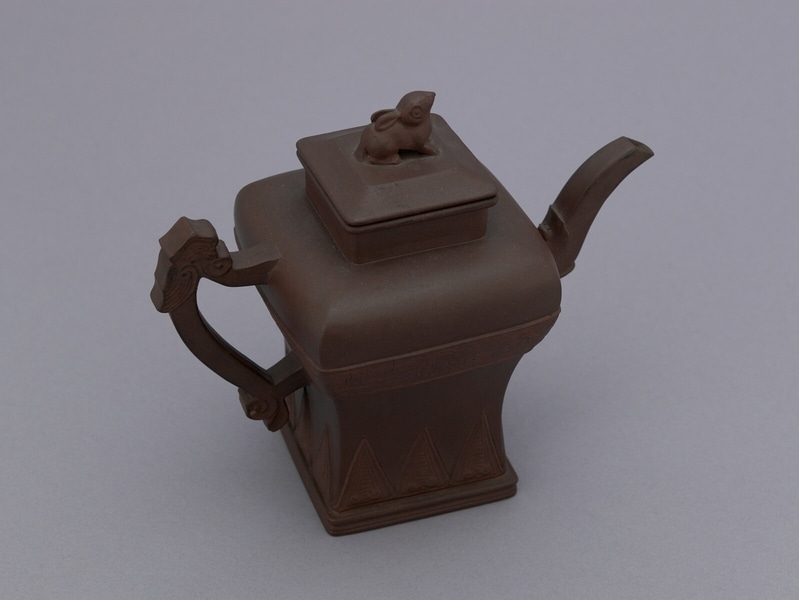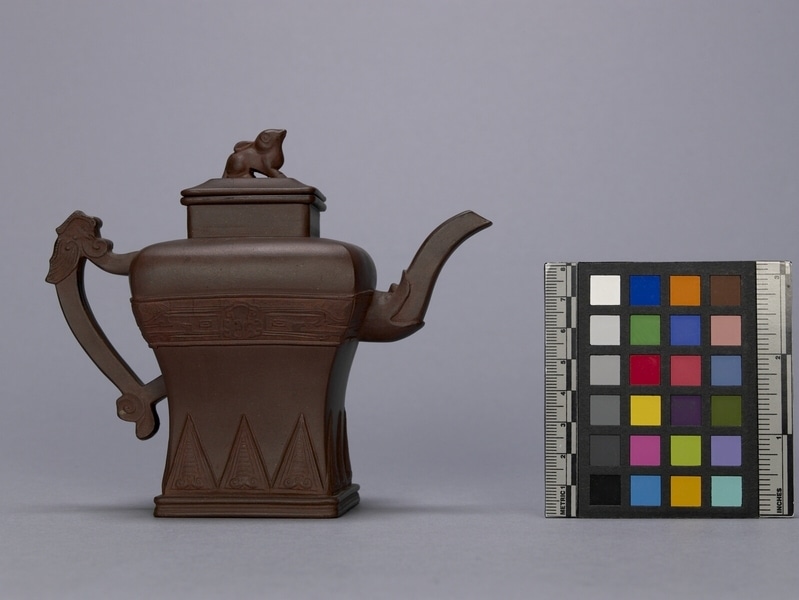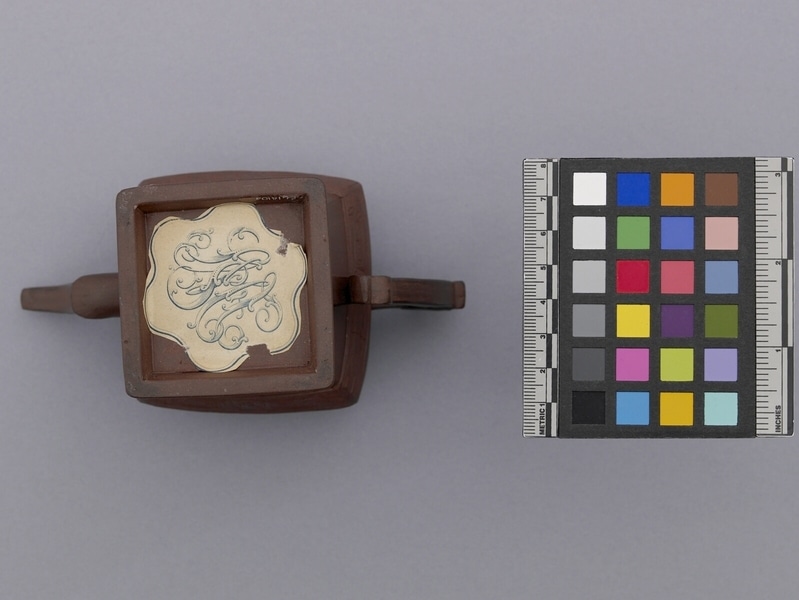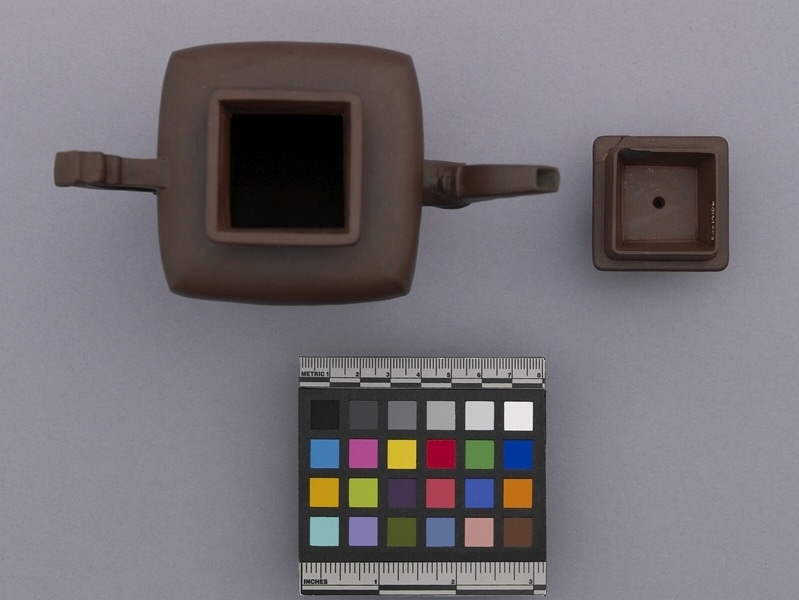Teapot Item Number: Edz1410 a-b from the MOA: University of British Columbia




Description
Ceramic teapot (part a) with lid (part b). Teapot has square base and grooved foot. On each of the four surfaces at bottom, there is a row of three rising blade cicada motifs. The teapot form curves outward into baluster shape. Just below the shoulder, a moulded band of k'uei dragons is interrupted by squared spout springing from a monster mouth. Opposite, there is a handle with a zoomorphic design. Rounded shoulder flattens to square collar. Fitting within is the flange of a slightly domed square lid, surmounted by a hare. On base is white paper label printed in blue with intricately entwined initials in European style: possibly "W.W.W."
History Of Use
The potteries producing I-hsing Ware have been active for thousands of years, although use of the distinctive clay types peculiar to I-hsing itself may date only to the beginning of the Ming Dynasty, 1368 C.E. The sandy clay, varying in shade from light yellow-brown through the best known red-brown to a dark brown-black, has the property of producing a hard lustrous surface when fired, and can therefore be used without glazing. Production has continued to the present time and includes glazed ware, particularly in a brilliant streaked blue-green, as well as the traditional form. The shapes of teapots can be classified in three main groups: those borrowed from archaic bronzes; those borrowed from nature; and those which are geometric.
Iconographic Meaning
The cicada is a symbol of immortality and resurrection; the hare is a symbol of longevity; k'uei dragons are seen in pairs opposed in profile and symbolize power.
Item History
- Made in Jiangsu, China between 1800 and 1900
- Owned by Sotheby's before July 7, 1982
- Received from Fyfe-Smith Memorial Oriental Collection Fund (Funding source) and Sotheby's (Seller) on July 7, 1982
What
Who
- Culture
- Chinese
- Previous Owner
- Sotheby's
- Received from
- Fyfe-Smith Memorial Oriental Collection Fund (Funding source) and Sotheby's (Seller)
Where
- Holding Institution
- MOA: University of British Columbia
- Made in
- Jiangsu, China
When
- Creation Date
- between 1800 and 1900
- Ownership Date
- before July 7, 1982
- Acquisition Date
- on July 7, 1982
Other
- Item Classes
- ceramics
- Condition
- good
- Accession Number
- 0815/0001 a-b